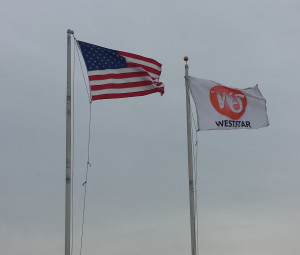Weststar is not leaving…
 Contrary to popular belief, Weststar is not moving out of California. Weststar is committed to providing quality services to our local customers as well as our customers throughout the world.
Contrary to popular belief, Weststar is not moving out of California. Weststar is committed to providing quality services to our local customers as well as our customers throughout the world.
A recent news piece from KGET in Bakersfield has led some people to believe that Weststar is leaving California. This is simply not true. Contact the Weststar office at 661-393-4453 for any other questions.
The story indicated that the owner of Weststar and Larry Jenkins, who owns B and L Casing in Bakersfield, were in Sacramento with Assemblywoman Shannon Grove at the introduction of AB 588. This is a bill designed to close loopholes in PAGA (the private attorney general act) in California.
During the interview, Mr. Jenkins indicated his plans to move his company out of California.
A little information about PAGA:
California enacted a new approach to enforcing the Labor Code several years ago, which we refer to as PAGA. This is the Private Attorney General Act of 2004 codified in Cal. Lab. Code § 2698, et seq. The law grants private attorneys the ability to act on behalf of the State of California Labor and Workforce Development Agency (“LWDA”) to pursue civil penalties normally only available to the State of California. These private attorneys need only find a current or ex-employee willing to allow the attorney to file on their behalf. Any resulting civil penalties are split between the LWDA and the employee with the LWDA receiving 75% of the penalties and the employee receiving 25%. Cal. Lab. Code § 2699(i).
Some violations are ones that many businesses do not even know are violations, nor are they given a chance to correct them once they are pointed out. Some of the common PAGA violations these attorneys attempt to find in a business are:
212, 213(d)
Wages must be payable is a check drawn on a California bank and must be payable without cost to the employee. This is another major violation. If you have to pay a fee to cash your payroll check because the bank is out of state or the bank itself charges a fee (Wells Fargo does this), then this is a violation of this section.
226(a)
The employer must print ALL of the following information on your pay check stub:
(1) gross wages earned,
(2) total hours worked by the employee for all non-exempt employees
(3) the number of piece-rate units earned and any applicable piece rate if the employee is paid on a piece-rate basis
(4) all deductions, provided that all deductions made on written orders of the employee may be aggregated and shown as one item,
(5) net wages earned,
(6) the inclusive dates of the period for which the employee is paid,
(7) the name of the employee and his or her social security number,
except that by January 1, 2008, only the last four digits of his or
her social security number or an employee identification number other
than a social security number may be shown on the itemized
statement
(8) the name and address of the legal entity that is the employer, and
(9) all applicable hourly rates in effect during the pay period and the corresponding number of hours worked at each hourly rate by the employee.
This is another frequently violated statute by employers in that they do not print all the above information.

